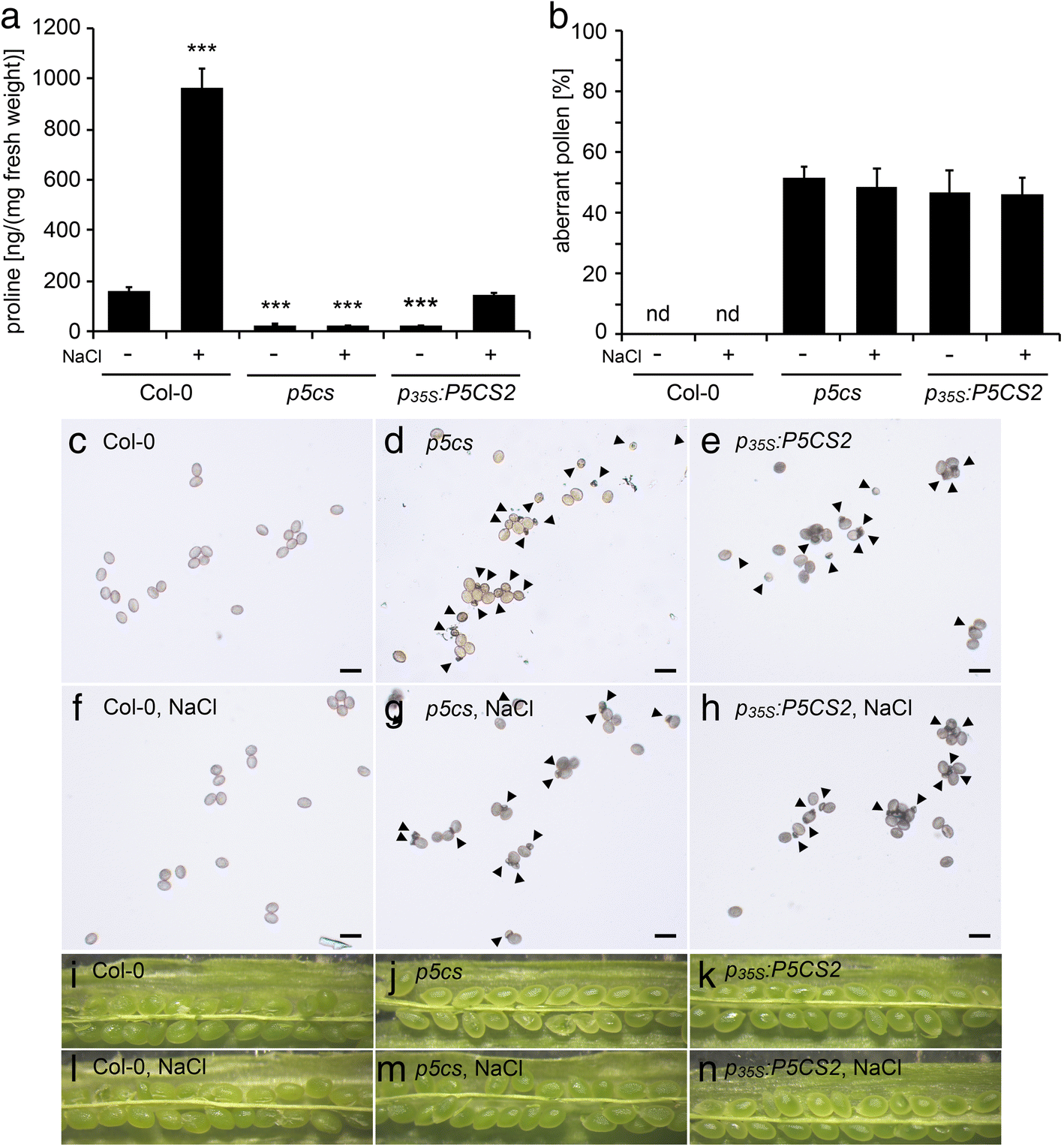Fig. 3
From:Proline synthesis in developing microspores is required for pollen development and fertility

Analysis of pollen development and fertility inp35S:P5CS2lines.aProline accumulation in inflorescences from wildtype (Col-0),p5cssesquimutants (p5cs) andp5cssesquimutants homozygous for thep35S:P5CS2construct (p35S:P5CS2). Plants were either watered normally or exposed to 100 mM NaCl, according to Material and Methods. Bars represent the mean ± SE of at least three samples from different plants. *** indicates significant differences from Col-0 wildtype (p < 0.001, by student’s T-test).bPercentages of aberrant pollen grains in flowers from plants treated in the same way as in (a). Bars represent the means of ±SE of 52 to 311 analyzed pollen grains from at least three independent plants. nd: not detected.c-hBright-field microscopic pictures of pollen grains from wildtype (c, f),p5cs(d, g), andp35S:P5CS2(e, h) lines either from normally watered plants (c, d, e)或从植物生理盐水处理(f, g, h). Arrowheads indicate small, aberrant pollen grains. Bars = 50 μm.i-nStereomicroscopic images of opened, premature siliques. No aberrant seeds, indicative of lethality ofp5cs2–1homozygous embryos (compare with Fig.6), are visible inside the siliques, neither under normal conditions (i-k) nor after NaCl treatment (l-m)
